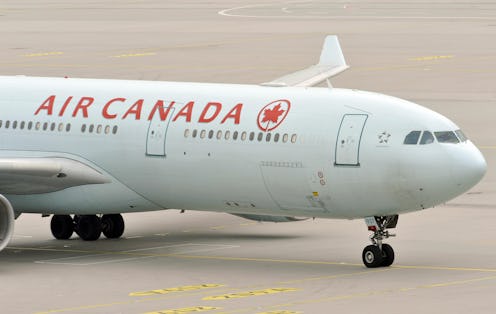News
What The Air Canada Crash Actually Looked Like
Following a week full of tragic aviation news, an Air Canada Airbus A320 crashed-landed in Halifax early on Sunday in a horrific way. According to flight investigators, the plane carrying 138 passengers and crew landed more than 1,000 feet short of the airport runway, causing the aircraft's landing gear and one of its two engines to be completely ripped off. The aircraft's wings were also partially ruined in the botched landing, which reportedly sent the plane skidding across a field and the runway before it came to a halt.
Fortunately, none of the passengers or crew members were seriously injured. "I’d say they’re pretty lucky," Mike Cunningham, regional manager of air investigations for the Transportation Safety Board of Canada, said during a news conference on Sunday.
Klaus Goersch, Executive Vice President and Chief Operating Officer of Air Canada, added in a statement that 23 passengers were admitted at local hospitals for observation and treatment. As of Sunday night, all 23 have been released:
We at Air Canada are greatly relieved that no one was critically injured. Yet we fully appreciate this has been a very unsettling experience for our customers and their families, as well as our employees, and we are focused on caring for all those affected. We will also fully cooperate with the Transportation Safety Board as it begins an investigation to determine the cause.
So, what caused the Air Canada plane to miss the runway and terrifyingly slide on its belly for a couple thousand feet, getting banged up in the process? The airline claims the weather was safe for landing even though it was snowing, The New York Times reported.
Cunningham added to the media that so far, investigators believe the plane clipped an antenna as it touched down for the landing. "At that point it [the aircraft] hit an antenna array," he told reporters. "This caused considerable damage to the aircraft and the main landing gear came off at that point.”
Cunningham said the belly and nosecone were also affected by the landing. And, when the plane snagged the antenna, it ended up downing some power lines, leaving the area in darkness. As investigators probe the incident for answers, one thing is for certain: This crash landing could have been a major disaster, and we're indeed fortunate no one was seriously injured.
The Plane
The Landing Gear
The Engine
The Runway
Image: Getty Images
